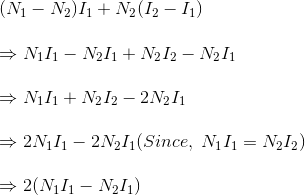Well, there are some methods to find out efficiency of transformers like OC & SC test on transformers,but they require direct loading on secondary.but in Sumpner's Test or Back to Back Test we apply phantom loading on transformer,so that we can save large amount of power from wasting.
Direct loading means the transformer is to be loaded to its rated capacity for specified number of hours to find out temperature rise.Hence, direct loading method of testing is normally not recommended especially for large capacity transformers as it involves huge amount of energy to be wasted only for testing of the transformer.
Direct loading means the transformer is to be loaded to its rated capacity for specified number of hours to find out temperature rise.Hence, direct loading method of testing is normally not recommended especially for large capacity transformers as it involves huge amount of energy to be wasted only for testing of the transformer.
Sumpner's Test on Transformers :
In Sumpner's Test test two transformers are connected back to back means,primaries of two transformers connected in parallel and secondaries side connected in series.
So,one transformer is loaded on the other in Sumpner's Test.We connect AC supply at primary side of transformers.And one more low voltage supply is connected in series with secondaries to get the readings, as shown in the circuit diagram shown below.
i.e. iron loss per transformer Pi = W1/2.
i.e. copper loss per transformer PCu = W2/2.
- Refer above diagram,Name the two transformers as T1 and T2,and they are identical.Secondaries of them are connected in voltage opposition, i.e. E2 of first and E2 of secondary emf's cancel each other because transformers are identical.
- In this case, as per superposition theorem,I1 & I2 vales are equal and in opposite direction,so resultant no current flows through secondary. And thus the no load test is simulated. The current drawn from V1 is 2I0, where I0 is equal to no load current of each transformer. Thus input power measured by wattmeter W1 is equal to iron losses of both transformers.
| Also Read: Buchholz Relay - Construction, Working Different Types Of Transformers Why Transformer Rating In KVA Not In KW? |
i.e. iron loss per transformer Pi = W1/2.
- Now, a small voltage V2 supplied to secondary side from low voltage transformer. By adjusting voltage V2 make rated current I2 flows through the secondary. In this case, both primaries and secondaries carry rated current.
- Thus short circuit test is simulated and wattmeter W2 shows total full load copper losses of both transformers.
i.e. copper loss per transformer PCu = W2/2.
















































